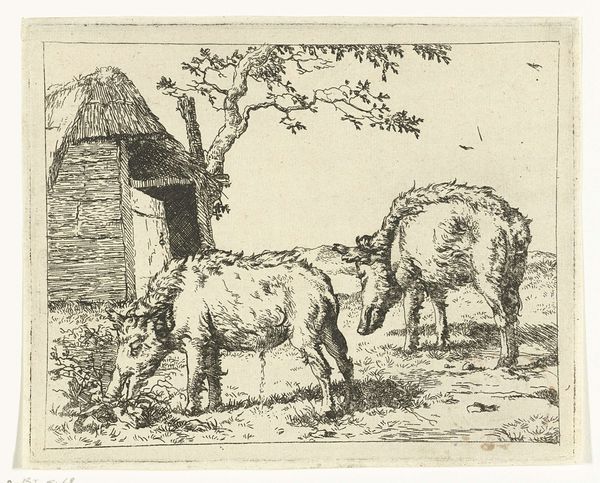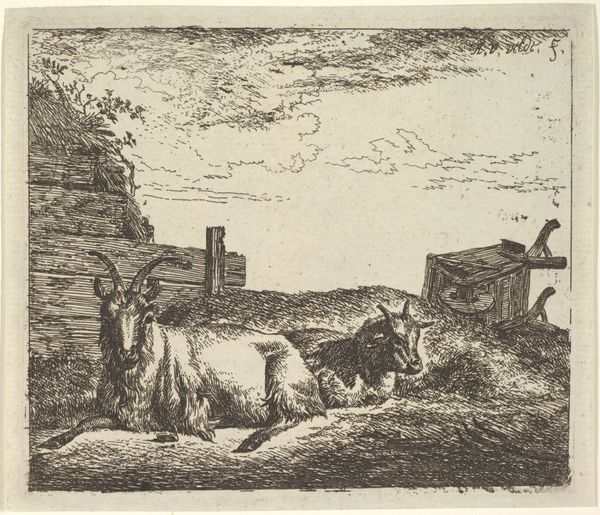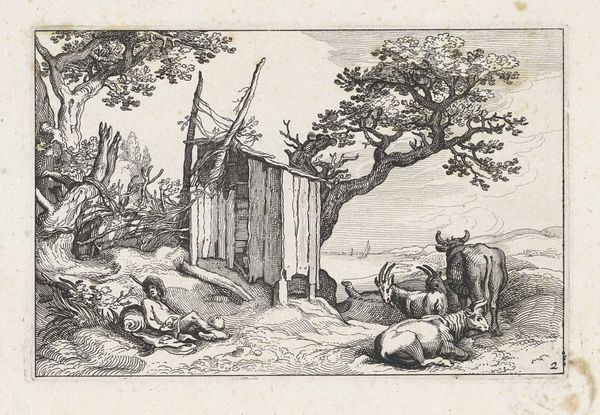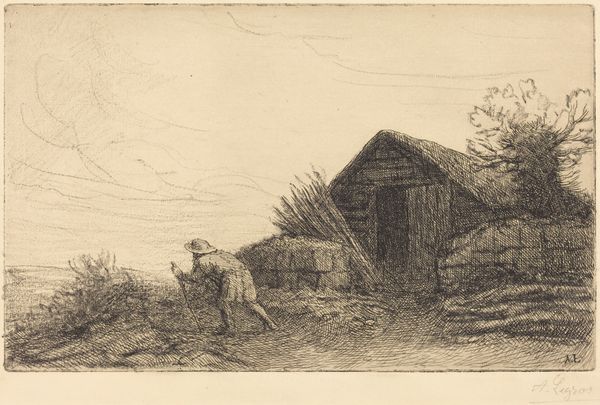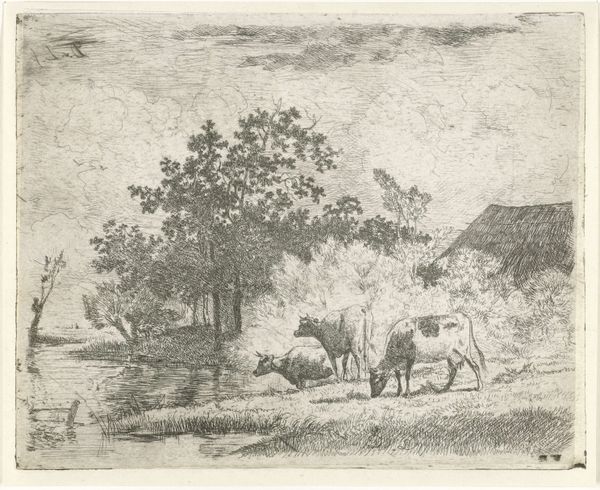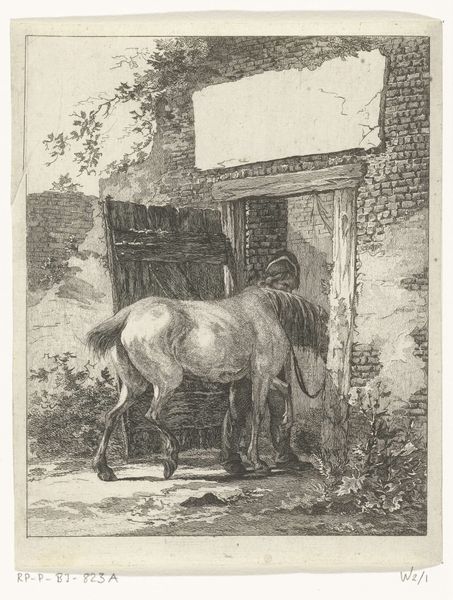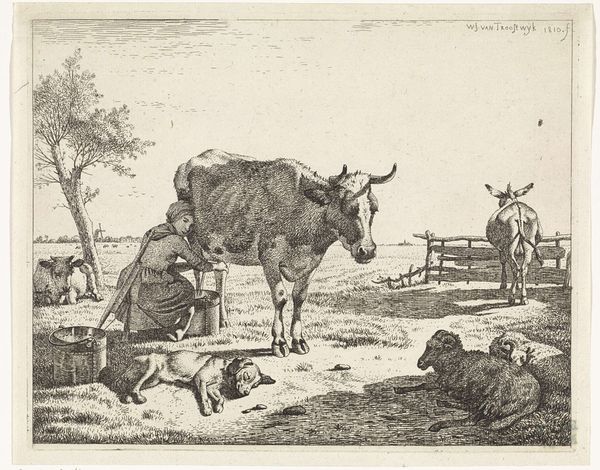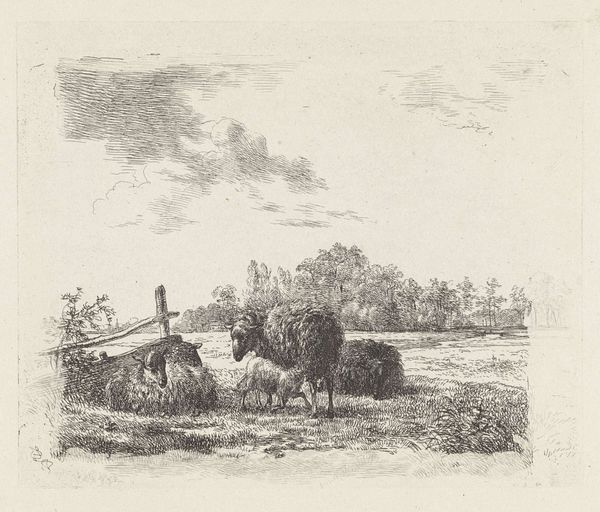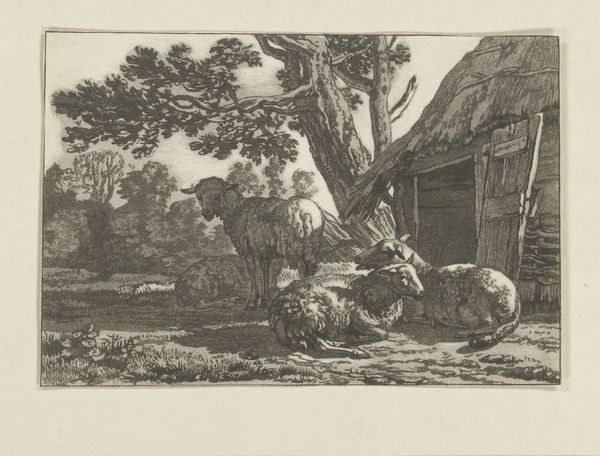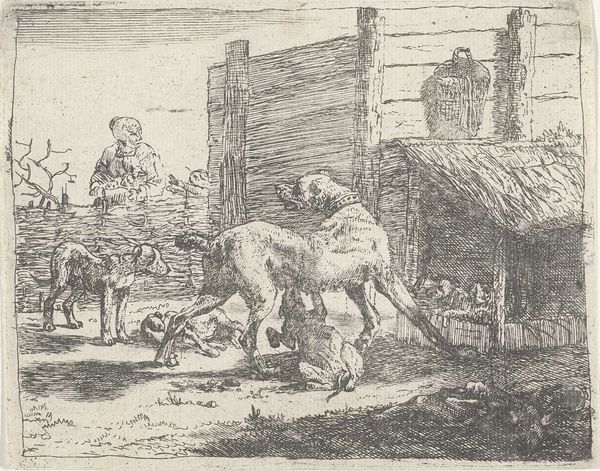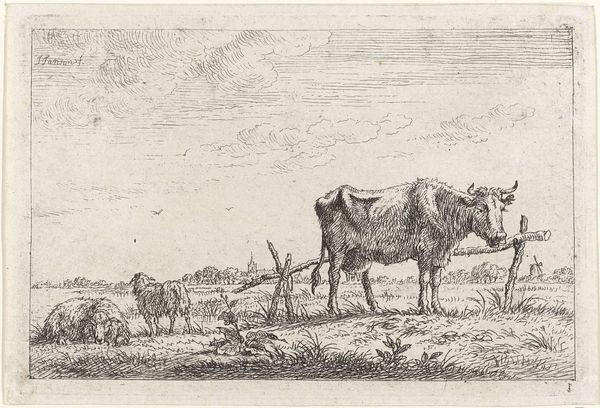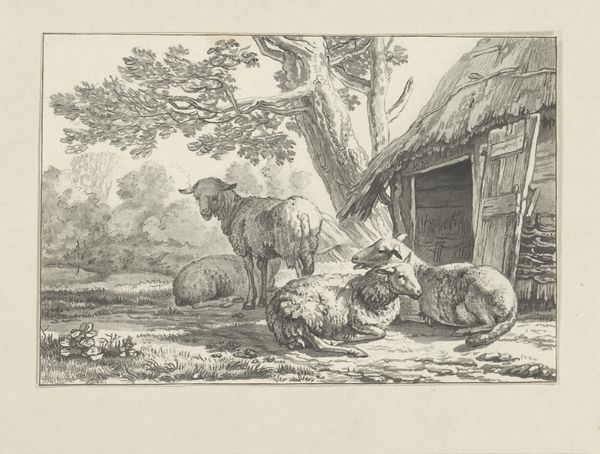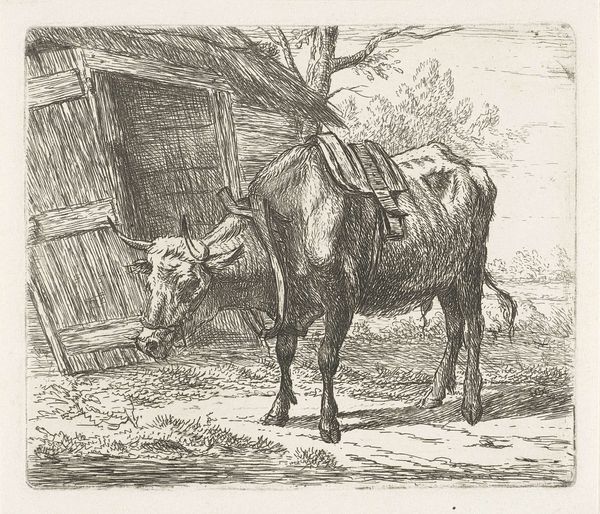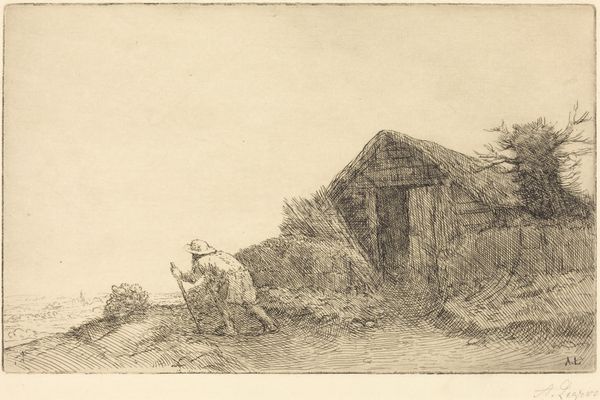
etching, engraving
#
dutch-golden-age
#
etching
#
landscape
#
genre-painting
#
engraving
#
realism
Dimensions: height 116 mm, width 147 mm
Copyright: Rijks Museum: Open Domain
Editor: So, this is "Schaap bij schaapskooi," or "Sheep by a Sheep Pen," an etching by Marcus de Bye from around 1660. I'm struck by how stark and unromantic it is. It's just... a sheep, standing in a doorway. What do you make of it? Curator: It's that starkness that draws me in. De Bye isn’t presenting a pastoral ideal. Instead, we see labor and the rural economy directly. Think about the context: The Dutch Golden Age wasn't golden for everyone. Inequality persisted. How might this seemingly simple image subtly critique that disparity? Editor: So you're saying it’s a commentary on class? But it’s just a sheep… isn't it? Curator: Consider who owned land, who profited from wool, and who performed the labor. That single sheep might represent an entire economic structure. Look how it’s positioned, half in shadow, half in light. Is it contained or free? And what about the shepherd, such a tiny figure in the background? Is he watching over the land or is he simply part of the landscape, like the tree? Editor: I see what you mean. The sheep becomes a symbol… but of what exactly? Of exploited labor? Or resilience? Curator: Perhaps both. Its very ordinariness challenges the glorification of wealth, pushing us to confront the realities upon which that "golden age" was built. Even landscape art can be a form of social critique. Editor: It’s amazing how much is packed into such a small, simple image! I'll never look at a landscape the same way. Curator: Indeed. This work prompts us to question whose stories are usually left out of art history and how we might reframe our understanding through a more critical lens.
Comments
No comments
Be the first to comment and join the conversation on the ultimate creative platform.
